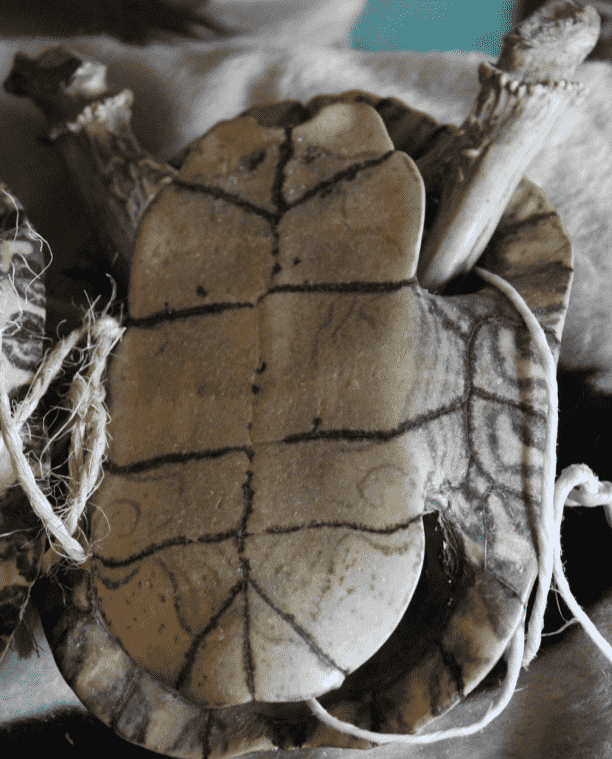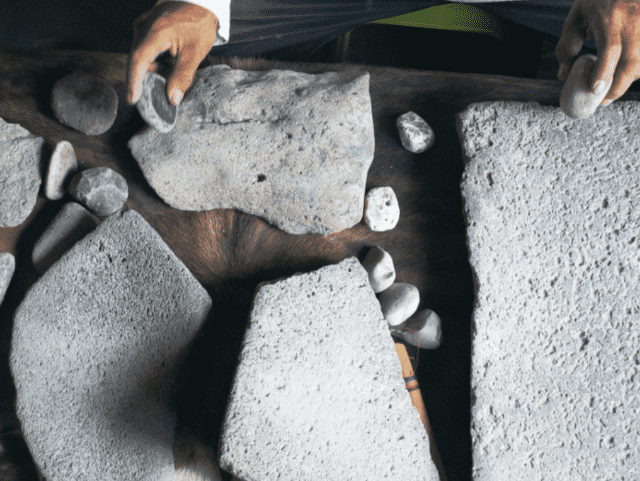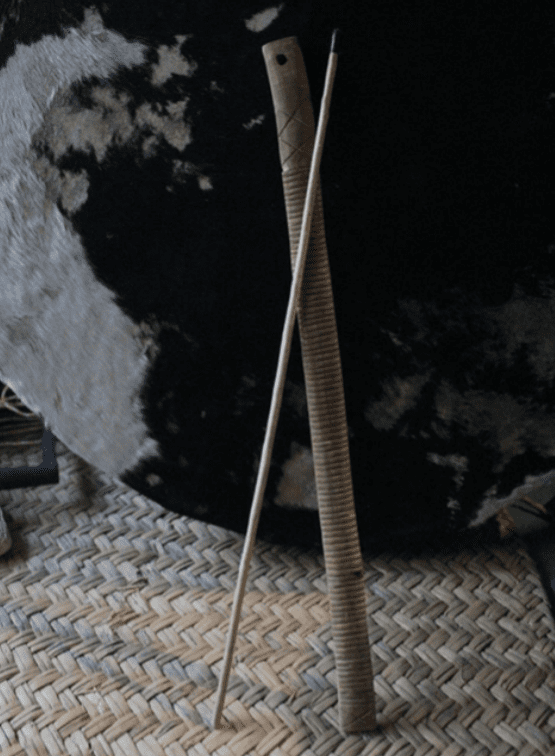What are the pre-Hispanic musical instruments and what was the music like at that time?
Here you will find some pre-Hispanic musical instruments, some of their characteristics, photographs, to strengthen the reader's sensibility and be part of the joy that chases away sadness.

As we can witness day by day, the symbolic fabric of the indigenous communities is still alive today. Many elements and pieces have indeed been lost to complete the socio-cultural panorama of the life of the original peoples, however, it has been possible to trace, recover and systematize diverse information, allowing us to shed light on such rich and enriching subjects as music, in the times that preceded the arrival of the Spaniards to the lands that today constitute Mexico.
Thanks to the memory and oral tradition of the communities, records in the Hispanic codices and chronicles, dedicated to the diffusion of the knowledge of the sounds of pre-Hispanic origin, it is possible to appreciate, produce and reproduce music through the instruments that in the second decade of the XXI century, survive and are expected to transcend the borders of time.
For some cultures such as the Mexica, music was part of a whole, also integrated by poetry and dance; nothing crazy, because to this day music is essential for dances and poetry speaks of a musicality provided by rhyme and intonations. Music is the joy necessary for life not to be sad, according to the Cuicatl myth that speaks of its origin.
It is believed that in the beginning this joy only belonged to the gods, until thanks to the sun and the wind, which brought music to humanity, is how the beings of the Earth made contact with those of the sky. Since then, those who play an instrument are the intermediaries between both parts of the universe: profane and sacred, heaven and earth, finite and infinite.
Music in its pure state or accompanied by diverse songs had great relevance in different social spheres of pre-Hispanic cultures, used to set the mood for festivities, religious ceremonies, rites or to announce the proximity of war, among other contexts of daily life. Thus, there would be a classification that distinguished three types of music: recreational, warrior and ritual.
The instruments of pre-Hispanic origin are classified into two large groups, according to the way they are played: breath instruments, which include aerophones that generate their sound from the air, and percussion instruments, grouping membranophones whose sound is originated by a membrane when percussing, blowing or rubbing. Furthermore, there are the ideophones that use their own body to vibrate and produce sound. A fundamental characteristic of pre-Hispanic instruments is their elaboration process, highlighting mostly natural or recycled materials such as wood, trunks, bones, and stones, just to mention a few.
Tlillan Tlapallan Group
Tlillan Tlapallan, place of the black ink and red ink, is a collective, established in the north of the State of Mexico in the municipality of Ecatepec de Morelos in Venta de Carpio, born approximately nine years ago to rescue the ancestral knowledge of the Nahua culture.
The project began with the idea of disseminating song and dance, its members are dedicated to research and development of multiple disciplines of pre-Columbian origin, such as traditional medicine and temazcal, in addition to the dissemination of this knowledge through talks, presentations, and events.
The formation of this small group seeks to preserve and disseminate the sounds and melodies produced by various instruments of ancient Mexico, to give identity to the people who inherited a valuable ancestral culture, a source of pride that allows everyone to value their roots.
The work of collectives such as Tlillan Tlapallan are of utmost importance for the culture of pre-Hispanic peoples to endure through time, not only in the present but also as a social practice that looks to the future.
Among the most outstanding pre-Hispanic instruments is the omichicahuaztli, an ideophone made from a human femur, whose soundbox was a skull often belonging to a captured warrior. Another characteristic ideophone is the tortoiseshell with many variations to be played. Lithophones are also representative of pre-Hispanic music, due to their materiality composed many times by volcanic rock and a very particular sound.
The following section shows some pre-Hispanic musical instruments, some of their characteristics, photographs, as well as a haiku to strengthen the reader's sensibility and to be part of the joy that drives away sadness.
Membranophone
Huéhuetl
The instrument is played with the hands to generate a wide variety of acoustic sounds, such as sounds produced from the top of the main pyramid (Templo Mayor), announcing the attack of the Aztec warriors.
Ipanhuéhuetl
Its use is fully ceremonial in the "Sun Dance" of the Dakota peoples still located in the United States. Its sound accompanies the laments and supplications that become beautiful chants during the ceremonies.
Yaqui Drum
Double drumhead drum that accompanies the sound of the flutes and whistles for the ceremonial dances of various peoples of the north of the country, such as the Yaqui and others of pre-Cortesian origin.
Idiophone
Áyotl
Instrument recognized as a precursor of the teponaztle, given its characteristics, its use can still be found in communities of Oaxaca.

Lithophones
There are multiple instruments carved in stone with precious engravings, for their rustic nature and their sharp sounds they are placed as instruments more and more in use.

Teponaztle
Always accompanied by the instrument called huehuetl, this is how chroniclers describe it. It has been found in archaeological sites in South America, and its use has been proven among the Olmecs, one of the oldest cultures in Mesoamerica.
Omechicahuaztli
Its importance as a ceremonial funeral instrument is balanced by its dual importance as an element of vitality and fertility. Its captivating sound is only accompanied in ceremonies by voices.
Chicahuaztli
Ritual instrument associated with the rain and its function of fertilizing action of the earth, the seeds inside. It can be found in communities from the north to the south of the continent.
Axakaxtletl
From guajes, canes, and even figurines with pebbles inside, these instruments are of sacred use, mainly to accompany the steps or the march of those who dance or sing.
Tenábaris
Its presence is currently felt in the dances of the Yaquis and Mayos, where these butterfly cocoons mark the steps of the one who gives life to the deer, the reborn sun.
Coyoltin
Its presence is a direct reference to the Aztec-Chichimeca dance corporations, who have recently rescued its use and popularity for the various ceremonies and festivities they preserve.
Ayakaxtle
Instrument of recent use whose use is very similar to the rattles of guaje or clay.
Clay pots
Clay kettledrums with different shapes that allow a tonal variety. Instruments can generally be found in the Mayan area where they are still in use today.
Tubular clay bell
Instrument of current origin, although its antiquity and relevance to pre-Columbian cultures is debated. It captivates for its stridency and unique sound given by the baked clay.
Omichicahuaztli
Wooden scraper, typical of the Yaqui people of pre-Cortesian origin.

Aerophone
Hómpak
The variety of recorded materials with which it has been manufactured is the common thread that leads to discovering the importance of the characteristic sound. Maya between engravings and frescoes, where it announces the presence of nobility.
Atekokolli
Ceremonial and battle instrument, belonging to the nobility as to the gods themselves. Trumpet of trumpets, a symbol of fertility, protection, and wisdom, a strong spiral that indicates the rebirth of the sun from humanity, sounding to the four winds from the Mictlan.
Channel Aerophone
Dog whistle
Zoomorphic whistles were very common for ceremonies, with a low sound they call to internalization.
Ehekaxíquitl
Instrument whose sound is not melodic, but is a representation of nature, imitation of the wind, roars of jaguars or human laments, of which it is speculated its use for the flowery wars.
Multiple flutes
Crown of the artistic skill of the musicians and potters of the pre-Columbian cultures, polytonal instruments that in unison allow a lucidity to the performer in its various possibilities, although the purpose of use of these instruments in the past has not been defined.
Tlapitzalli
With a higher pitched sound and festive tone, it is recorded that these flutes accompanied captive men during festivities in the last moments of their lives, who represented the presence of a god before being sacrificed. Their high-pitched sound was the cause of both joy and terror.
Akatlapitzalli
Due to the fragility of the material with which these flutes are made, we can find few records of them in archaeological sites, however, their presence is strongly rooted in the communities of the Huasteca, where they accompany the dances and ceremonies conducted during the most important festivities.
Source: National Institute of Indigenous Peoples, Mexico




